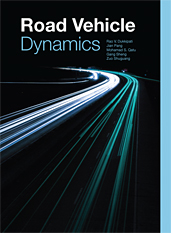Technical Paper
Evaporation Characteristics of n-Heptane Droplet Streams in a Heated Air Channel Flow
2016-04-05
2016-01-0843
An experimental study is presented on the evaporation of diluted droplet-laden two-phase jet flows within a heated air channel co-flow. In this study, n-heptane is pre-atomized by an ultrasonic nozzle to produce droplet cluster with a median diameter of about15μm, and a continuous cold air flow is applied to carry the fuel droplet cluster to emerge from a nozzle tube, producing a free turbulent jet of droplet stream. The droplet stream is then introduced as a central jet into a square-shaped channel with heated air co-flow for evaporation investigations. With flexibilities of the initial properties of droplet stream and surrounding conditions of channel flow, the axial evolution of droplet size is determined to characterize the evaporation behavior of n-heptane droplet stream under various boundary conditions. The equivalence ratios of droplet streams are varied by changing both the carrier-air flow rate and the fuel flow rate.


